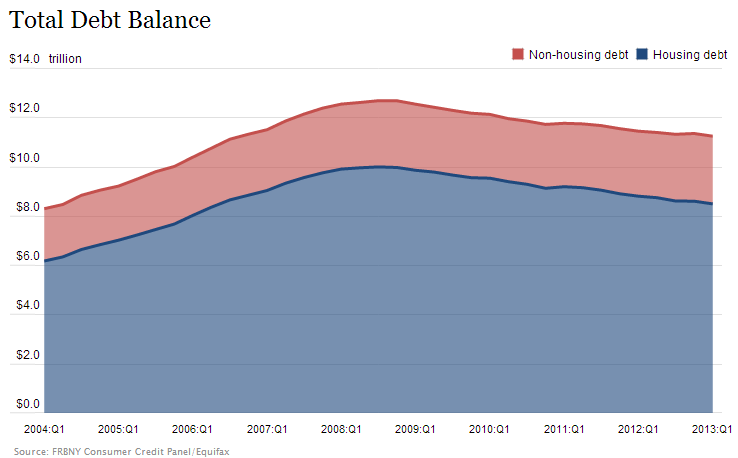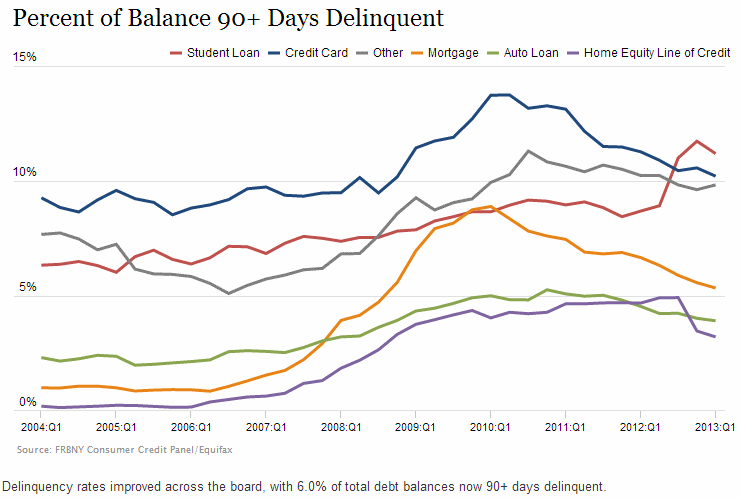American households have resumed what is now nearly a five year effort to decrease their debt. The Household Debt and Credit Report for the first quarter of 2013 released today from the Federal Reserve Bank of New York noted that outstanding household debt declined approximately $110 billion in the quarter compared to the fourth quarter of 2012. The decline was due primarily to reductions in mortgage and credit card debt.
Household debt was at 11.23 trillion in the first quarter, down 1.0 percent from the previous quarter and well below the peak of $12.68 trillion it reached in the third quarter of 2008. Outstanding mortgage debt was $7.93 trillion, down from $8.03 trillion in Q4 2012 and HELOC balances fell $11 billion to $552 billion. Overall mortgage debt peaked in Q3 2008 at $9.9 trillion.

"After a temporary deceleration in the previous quarter, the data suggest that household deleveraging has resumed its previous trajectory," said Wilbert van der Klaauw, senior vice president and economist at the New York Fed. "We'll look to see if this pace of debt reduction and delinquency improvements will persist in upcoming quarters."
Mortgage delinquency rates fell to 5.4 percent from 5.6 percent and HELOC delinquencies from 3.5 percent to 3.2 percent quarter-over-quarter. In another positive development, the share of 30 to 60 day delinquent mortgages that transitioned to improved from 28 percent in the fourth quarter to 35 percent in the first while only 1.6 percent of previously current balances moved into delinquent status compared to 1.8 percent in the fourth quarter. Also positive was a decline for the fourth consecutive quarter in numbers of individuals who had new foreclosure notations added to their credit reports; down 12.5 percent to 184,000.
The Fed also said that mortgage originations rose for the sixth consecutive quarter, to $577 billion.
Credit card debt declined by $19 billion during the quarter to a total of $660 billion but both student loan debt and auto loans increased substantially. Student debt rose $20 billion to $986 billion and auto loans were $11 billion higher at $794 billion.
Non-mortgage delinquencies also improved with auto loan rates down one basis point to 3.9 percent, credit card delinquencies falling to 10.2 percent from 10.6 percent and student loans from 11.7 to 11.2 percent. The overall 90+ day delinquency rate for all loans fell to 6.0 percent from 6.3 percent in the fourth quarter and 8.7 percent at the peak three years ago.

The Quarterly Report is based on data drawn from anonymized Equifax credit data.







